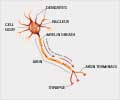Teens with type 2 diabetes can have a decrease in the total gray matter volume in their brain.

- Diabetes mellitus is a metabolic disorder. It affects all age groups.
- Diabetes mellitus is associated with cognitive decline.
- Type 2 diabetes in teens can affect the gray matter in their brain
Hyperglycemia, insulin resistance, vascular changes, amyloid deposit and hypoglycemia could be the possible reasons for the cognitive decline, The Cincinnati study focused on the gray matter volume in Type 2 diabetic teens. The study included 20 teens with type 2 diabetes. They matched the healthy controls and the diabetic group for age, sex and race. The diabetic group included teens between 10-20 years of age with HbA1c>7.9%, BMI>85% and with no previous neurological or psychiatric problems. The control group included lean subjects.
High resolution T1 weighted structural MRI was used to obtain the brain images for the study. Tissue segmentation analysis was used to calculate the total gray matter volume and total white matter volume. Voxel Based Morphometry was used to see the regional volume difference in the brain.
The results showed a significantly decreased total gray matter volume in the diabetic group. The total white matter volume and total brain volume showed no significant difference between the two groups. The adjusted gray matter volume i.e., the ratio between the total gray matter volume and total brain volume was found to be significantly less in the diabetic group. The adjusted white matter volume was not significantly different between two groups. The regional gray matter differences were found.
There was a decrease in gray matter volume in six regions of the brain responsible for sight, hearing, speech, decision-making, self-control and memory. Prevention of diabetes by controlling the modifiable risk factors is necessary. But in patients with diabetes, glycemic control is essential to prevent hyperglycemia-related complications.
- http://webcasts.diabetes.org/html5Player/default.aspx?webcastXmlInfo=http://webcasts.diabetes.org/netadmin/Content/ADA2016/sync/CT-OR14/39284.xml&videoBaseUrl=https://s3.amazonaws.com/ada-stream01/ADA2016/CT-OR14/
- Kodl, C. T., & Seaquist, E. R.(2008). Cognitive Dysfunction and Diabetes Mellitus. Endocrine Reviews, 29(4), 494–511.http://doi.org/10.1210/er.2007-0034
- Biessels, G.J. and Y.D. Reijmer, Brain Changes Underlying Cognitive Dysfunction in Diabetes: What Can We Learn From MRI? Diabetes, 2014. 63(7): p. 2244-2252.















